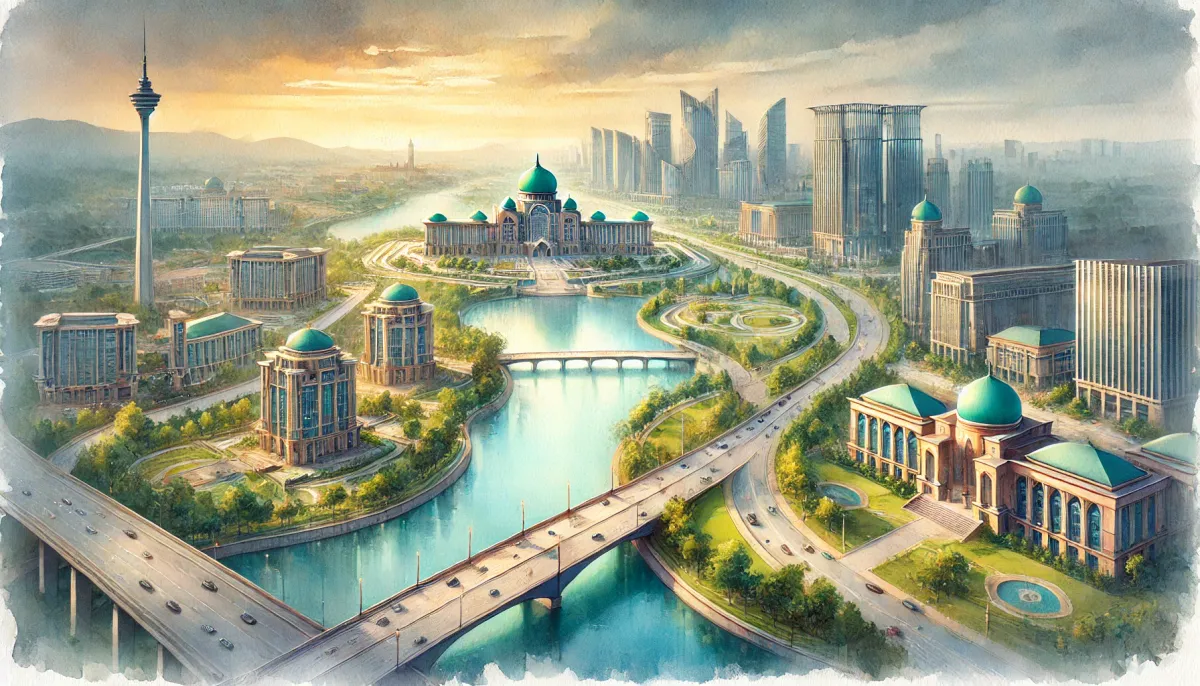Putrajaya

Putrajaya, Malaysia’s planned administrative capital, was developed in the 1990s to relieve congestion in Kuala Lumpur and create a modern government hub. Located 25 km south of Kuala Lumpur, it features grand government buildings, wide boulevards, and extensive green spaces, with 68% of its area dedicated to parks, lakes, and wetlands. Designed as a smart city, Putrajaya integrates high-tech infrastructure, efficient public transport, and sustainable urban planning. However, despite its well-planned layout, the city has struggled with low population density and limited commercial vibrancy, as many workers commute from Kuala Lumpur instead of residing there. While it successfully serves as Malaysia’s administrative and diplomatic center, Putrajaya continues to evolve, aiming to attract more residents, businesses, and technological innovation.
Putrajaya is a new city, not just a district. Located in Malaysia, it was developed in the 1990s to serve as the country’s administrative capital, replacing Kuala Lumpur as the seat of government. Putrajaya was designed to be a planned city with modern infrastructure, government buildings, residential areas, and commercial zones, focusing on sustainability and green spaces.
Unlike a district, which is an extension of an existing city, Putrajaya was built from scratch to accommodate the growing needs of the Malaysian government and provide a modern, efficient capital. With its own governance, infrastructure, and urban planning, Putrajaya operates as a self-contained city rather than a district within Kuala Lumpur.
Putrajaya successfully functions as Malaysia’s administrative heart and a showcase of modern urban planning. However, it hasn’t fully evolved into a vibrant, mixed-use urban center, keeping it in the moderate momentum category.
Strengths:
- Modern Administrative Capital: Putrajaya serves as Malaysia’s seat of government, housing most of the federal ministries, courts, and the Prime Minister’s Office.
- High-Quality Infrastructure and Urban Design: The city is known for its well-maintained roads, bridges, and public spaces, and its urban layout integrates green spaces, lakes, and parks.
- Strong Government Investment: Continuous public-sector funding ensures that Putrajaya’s infrastructure and facilities remain among the best in Malaysia.
- Stable Population Base: Though primarily a government city, Putrajaya has steadily grown its residential population, supported by planned neighborhoods and educational institutions.
Challenges:
- Limited Private-Sector Activity: Putrajaya remains heavily reliant on the public sector, with relatively low levels of private investment and commercial activity.
- Lacks Urban Vibrancy: Despite its stunning architecture and clean environment, Putrajaya often feels more like an administrative complex than a bustling city. Retail and entertainment options remain limited.
- Dependence on Government Presence: While this provides stability, it also limits the city’s economic diversity and long-term adaptability.
- Cultural and Social Depth: The city is carefully planned but lacks the organic culture and energy found in more established cities like Kuala Lumpur or Penang.
The projected population for Putrajaya in 2040 is lower than the current figure due to anticipated demographic shifts, including an aging population and declining birth rates. These factors contribute to a projected decrease in the overall population by 2040.
| Year | Population Estimate |
|---|---|
| 2000 | ~12,240 |
| 2010 | ~72,413 |
| 2020 | ~109,202 |
| 2023 | ~119,200 |
| 2024 | ~119,700 |
| 2040 | ~112,100 |




